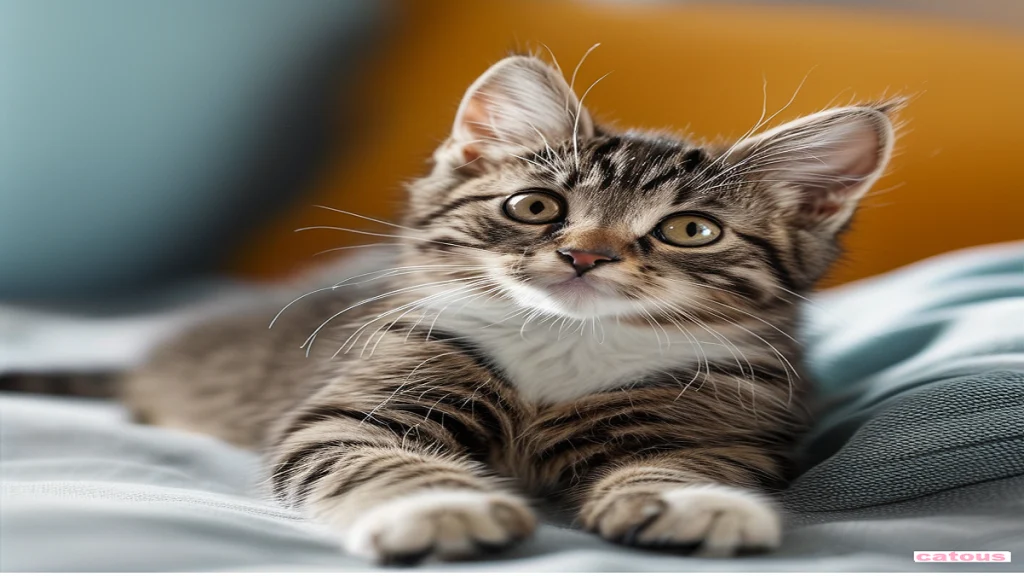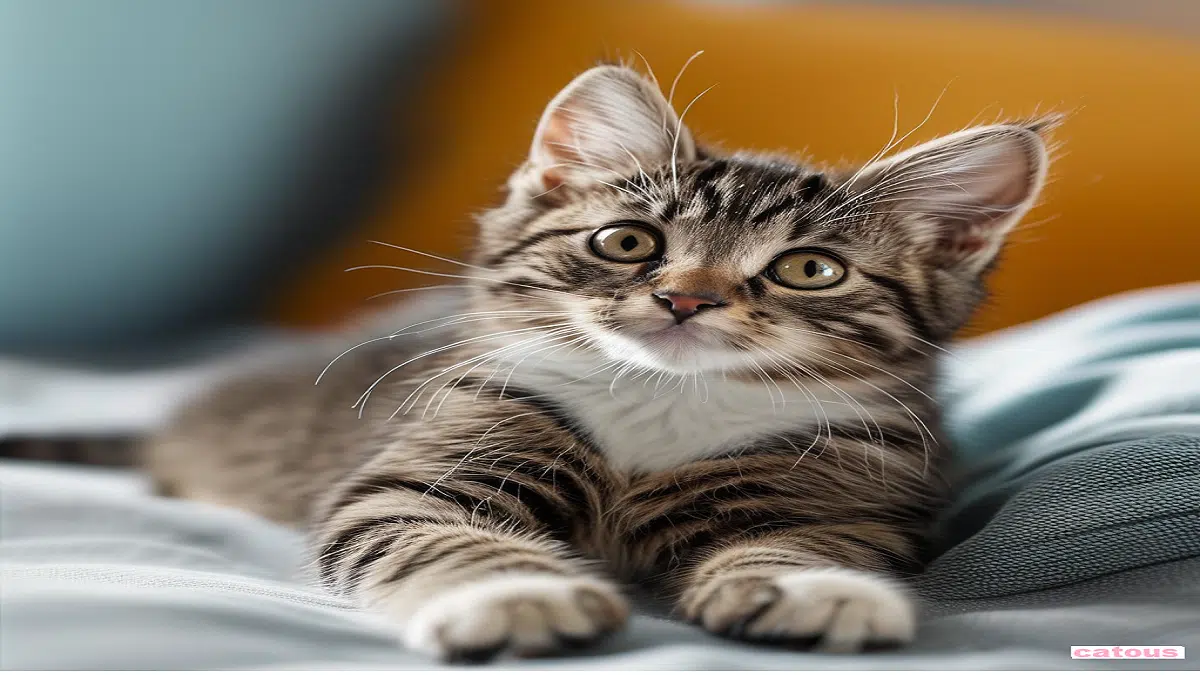Views: 19
Discover 15 crucial cat nutrition tips to keep your feline friend healthy and happy. Learn about balanced diets, feeding schedules, and special dietary needs for optimal cat health.

Table of Contents
1.Introduction to Cat Nutrition
As a cat owner, ensuring your feline friend receives proper nutrition is one of the most important aspects of pet care. Good nutrition is the cornerstone of a healthy, happy, and long-lived cat. In this comprehensive guide, we’ll explore 15 essential cat nutrition tips that will help you provide the best possible diet for your furry companion.
Cats are obligate carnivores, which means their bodies are designed to digest and use animal-based proteins efficiently. Unlike dogs or humans, cats have unique nutritional requirements that must be met to maintain optimal health. By understanding these needs and implementing the right feeding strategies, you can significantly improve your cat’s well-being and potentially prevent various health issues.
2.Understanding Your Cat’s Nutritional Needs
Tip #1: Recognize that cats have specific dietary requirements
Cats require a diet high in protein, moderate in fat, and low in carbohydrates. Their bodies are not designed to process large amounts of plant-based materials, so it’s crucial to choose cat foods that align with their natural dietary needs. A balanced cat diet should consist of:
- 50-60% protein
- 30-40% fat
- 5-10% carbohydrates
When selecting cat food, always opt for products that list a high-quality animal protein source as the first ingredient. This ensures that your cat is getting the essential amino acids they need for muscle maintenance, immune function, and overall health.
3.The Importance of Protein in a Cat’s Diet
Tip #2: Prioritize high-quality animal proteins
Protein is the most critical component of a cat’s diet. Cats require specific amino acids that are only found in animal-based proteins, such as taurine and arginine. These amino acids are essential for various bodily functions, including heart health, vision, and reproduction.
Good sources of protein for cats include:
- Chicken
- Turkey
- Fish (such as salmon or tuna)
- Beef
- Lamb
When choosing cat food, look for products that contain named meat sources rather than generic “meat by-products” or “animal digest.”
4.Essential Nutrients for Cats
Tip #3: Ensure your cat’s diet includes all essential nutrients
In addition to protein, cats require a variety of other nutrients to thrive. These include:
- Fats: Provide energy and help absorb fat-soluble vitamins
- Vitamins: Essential for various bodily functions
- Minerals: Support bone health, muscle function, and more
- Taurine: Critical for heart and eye health
- Water: Necessary for hydration and overall health
A high-quality, commercially prepared cat food should contain all these nutrients in the right proportions. However, it’s always a good idea to familiarize yourself with your cat’s specific needs and consult with your veterinarian to ensure their diet is meeting all requirements.
5.Wet vs. Dry Cat Food: Pros and Cons
Tip #4: Consider offering a mix of wet and dry food
Both wet and dry cat foods have their advantages and disadvantages. Many veterinarians recommend offering a combination of both to provide a balanced diet and cater to your cat’s preferences.
Wet food benefits:
- Higher moisture content (helps with hydration)
- Often more palatable for cats
- Usually contains more animal-based proteins
- Can be beneficial for cats with urinary tract issues
Dry food benefits:
- More convenient to store and serve
- Often more cost-effective
- Can help maintain dental health
- Higher caloric density (good for active cats)
Ultimately, the choice between wet and dry food (or a combination) should be based on your cat’s individual needs, preferences, and any health considerations.
6.Feeding Schedule and Portion Control
Tip #5: Establish a consistent feeding schedule
Cats thrive on routine, and this includes their meal times. Establishing a consistent feeding schedule can help regulate your cat’s digestion and prevent overeating. Most adult cats do well with two meals a day, while kittens may require three to four smaller meals.
Tip #6: Practice portion control
Overfeeding is a common issue that can lead to obesity and related health problems. Follow the feeding guidelines on your cat food packaging, but remember that these are general recommendations. Your cat’s individual needs may vary based on factors such as age, activity level, and overall health.
Use a measuring cup to ensure accurate portions, and adjust the amount if you notice your cat gaining or losing weight. Regular weigh-ins and body condition assessments can help you maintain your cat’s ideal weight.
7.Special Dietary Considerations for Different Life Stages
Tip #7: Adapt your cat’s diet to their life stage
Cats have different nutritional needs at various stages of life. Ensure you’re providing age-appropriate nutrition:
Kittens (0-12 months):
- Require more calories and protein for growth
- Need food specifically formulated for kittens
- May benefit from more frequent, smaller meals
Adult cats (1-7 years):
- Need a balanced maintenance diet
- May require adjustment based on activity level and body condition
Senior cats (7+ years):
- Often need fewer calories due to decreased activity
- May benefit from joint-supporting nutrients like glucosamine
- Might require easier-to-digest formulas
Always consult with your veterinarian when transitioning between life stage diets to ensure your cat’s specific needs are met.
8.Common Food Allergies and Sensitivities in Cats
Tip #8: Be aware of potential food allergies or sensitivities
Like humans, cats can develop food allergies or sensitivities. Common allergens in cat food include beef, fish, chicken, and dairy products. Symptoms of food allergies in cats may include:
- Skin irritation or excessive grooming
- Gastrointestinal issues (vomiting or diarrhea)
- Ear infections
- Respiratory problems
If you suspect your cat has a food allergy, consult your veterinarian. They may recommend an elimination diet to identify the problematic ingredient and suggest appropriate hypoallergenic or limited-ingredient diets.
9.The Role of Water in Cat Nutrition
Tip #9: Encourage proper hydration
Water is crucial for your cat’s overall health, aiding in digestion, temperature regulation, and waste elimination. Cats evolved as desert animals and have a low thirst drive, which means they may not drink enough water on their own.
To promote hydration:
- Provide fresh, clean water daily
- Use water fountains to encourage drinking
- Feed wet food, which has a higher moisture content
- Add water to dry food if your cat prefers it
Proper hydration is especially important for cats prone to urinary tract issues or those on primarily dry food diets.
10.Homemade Cat Food: Benefits and Risks
Tip #10: Approach homemade diets with caution
While some cat owners prefer to prepare homemade meals for their pets, it’s crucial to approach this option carefully. Homemade diets can be beneficial when done correctly, offering control over ingredients and freshness. However, they also come with risks:
Benefits:
- Control over ingredients and quality
- Ability to cater to specific dietary needs
- Avoidance of preservatives and additives
Risks:
- Nutritional imbalances if not properly formulated
- Time-consuming to prepare
- Potential for foodborne illness if not handled properly
If you’re considering a homemade diet for your cat, consult with a veterinary nutritionist to ensure the meals are balanced and meet all of your cat’s nutritional needs.
11.Treats and Supplements: Do Cats Need Them?
Tip #11: Use treats sparingly and choose supplements wisely
Treats can be a great way to bond with your cat and provide positive reinforcement, but they should make up no more than 10% of your cat’s daily caloric intake. Choose healthy, meat-based treats and avoid those high in carbohydrates or artificial additives.
As for supplements, a balanced commercial cat food should provide all the necessary nutrients. However, some cats may benefit from specific supplements based on their individual health needs. Always consult with your veterinarian before adding any supplements to your cat’s diet.
12.Obesity in Cats: Prevention and Management
Tip #12: Maintain a healthy weight for your cat
Obesity is a growing concern in cats and can lead to various health issues, including diabetes, arthritis, and heart problems. To prevent obesity:
- Measure food portions accurately
- Limit high-calorie treats
- Encourage regular exercise through play
- Avoid free-feeding (leaving food out all day)
If your cat is overweight, work with your veterinarian to develop a safe weight loss plan. Never put your cat on a crash diet, as rapid weight loss can be dangerous for cats.
13.Reading and Understanding Cat Food Labels
Tip #13: Learn to decipher cat food labels
Understanding cat food labels is crucial for making informed decisions about your pet’s nutrition. Key points to consider:
- Ingredient list: Ingredients are listed by weight, with the most prevalent first
- Guaranteed analysis: Provides minimum percentages of crude protein and fat, and maximum percentages of fiber and moisture
- AAFCO statement: Indicates whether the food meets established nutritional standards
Look for foods that list a named animal protein source as the first ingredient and avoid those with excessive fillers or by-products.
14.Transitioning to a New Diet
Tip #14: Introduce new foods gradually
When changing your cat’s diet, whether due to age, health concerns, or simply trying a new brand, it’s important to transition slowly. A sudden change can lead to digestive upset or food refusal.
Follow this transition schedule:
- Days 1-3: 75% old food, 25% new food
- Days 4-6: 50% old food, 50% new food
- Days 7-9: 25% old food, 75% new food
- Day 10 and beyond: 100% new food
If your cat shows signs of digestive upset during the transition, slow down the process and consult your veterinarian if problems persist.
15.When to Consult a Veterinary Nutritionist
Tip #15: Seek professional advice for complex nutritional needs
While these tips provide a solid foundation for cat nutrition, some situations may require specialized knowledge. Consider consulting a veterinary nutritionist if:
- Your cat has multiple health issues requiring dietary management
- You’re considering a homemade diet
- Your cat has severe food allergies or intolerances
- You’re struggling to manage your cat’s weight
A veterinary nutritionist can provide tailored advice and create custom meal plans to address your cat’s specific needs.
Conclusion
Proper nutrition is fundamental to your cat’s health and well-being. By following these 15 essential cat nutrition tips, you can ensure that your feline friend receives a balanced, appropriate diet that supports their overall health and longevity. Remember that every cat is unique, and what works for one may not be ideal for another. Always monitor your cat’s health, weight, and energy levels, and don’t hesitate to consult with your veterinarian if you have concerns about your cat’s nutrition or overall health.
By staying informed and attentive to your cat’s nutritional needs, you’re taking a crucial step towards providing them with a happy, healthy life. Your furry companion will thank you with purrs, cuddles, and many years of loving companionship.
#CatNutrition #FelineHealth #PetCare #CatDiet #HealthyCats

